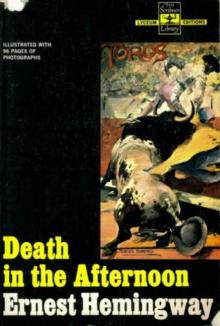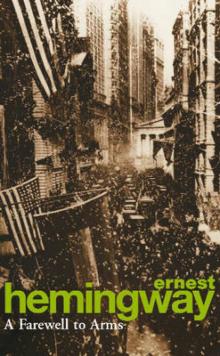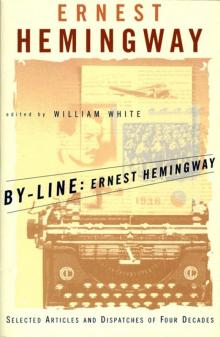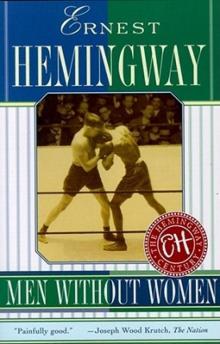- Home
- Ernest Hemingway
Dateline- Toronto Page 44
Dateline- Toronto Read online
Page 44
But what had happened inside the bank?
The desperadoes had blown open the vault door. But when they attempted to blow open the safe, they had blown it clear out through the back of the bank building. There it was found, unopened, by the citizens of Ville Marie when they came out in the glare of the burning bank building to look at the scene of the crime. Next day, June 26, 1916, the safe was brought across the lake to Haileybury. The robbers had obtained a few thousand dollars worth of bonds, which prove more of a liability than an asset to yeggmen, from the vault. All the cash was in the safe. And they didn’t get any of it.
With variations this robbery has appeared again and again through the annals of Canadian crime.
It is the story of unsuccessful safe-blowing. Safe-blowing is supposed to be a thing easy to accomplish. But year after year it becomes increasingly hard.
There have been great bank robberies in Canada, and Toronto has recently suffered. But they are an entirely different thing. The “stick-up” or payroll jobs.
In them the banks have been attacked at the weakest link in their chain of money-guarding. The time when their money must be temporarily exposed for the purpose of transferring large sums through messengers.
There is no mechanical device that can protect them there except the pistol or the sawed-off shotgun. And opposed to them is a very efficient mechanical device that has changed the entire aspect of crime. That device is the automobile. It plays its part in nearly every robbery, holdup or crime of violence in Canada.
But while the banks must expose their funds occasionally, during a transference they take good care that there should be no chance of any robbery during the time that the funds are in the care of the bank itself.
There are electrical systems installed in banks that automatically give the alarm to the police and set off a siren and gong outside to give a local alarm if any burglary is attempted.
This system is not altogether popular with Toronto banks.
An officer of one Toronto bank told the Star Weekly that people were in almost every day with some safety system or other.
A favorite system they have to sell is one whereby the teller steps on a button if anyone comes in to hold him up. That sets off an alarm outside. The idea is for the button to be where he can reach it in his usual position if he is forced to throw up his hands. As a result, it is right under his feet and he is setting it off all the time. “We can’t afford to cry wolf in a bank,” the bank officer explained.
Then there was the rumor that a certain Toronto bank was protected by machine guns. Just how the machine guns were to be cut loose on the robbers was never explained.
The origins of this rumor are the two German Maxims, war souvenirs, that flank the entrance to the vault of the Canadian Bank of Commerce.
In many banks there are supposed to be secret watching-places built into the building near the eaves where an armed guard can observe every move made below and himself remain unseen.
“That is a very primitive measure,” a Toronto bank officer told the Star Weekly. “When I was young I once had the job of watching through a hole in the floor down into the vault below. In those days, too, a vault was once protected from burglars by an iron bar that fitted into the door from another vault and the place of entrance covered with plaster. That was the real old days.”
In those days, the hours when the bank was shut and the cash and bonds locked in the vault were the most dangerous of all. Now they are the safest.
It is the wonderful supervaults and mammoth safes that guard the money of Canadians that have made the head offices of all the banks absolutely cracksman-proof. A safe-builder told the Star Weekly that no head office of a Canadian bank had ever had its safe blown. A bank officer confirms this statement.
To break into a modern big safe and yegg-proof vault, the burglar would need a motortruckload of tools and a college graduate in engineering to handle them.
When banks are robbed and the safes blown, it is always a little branch that suffers. Then even when the robbers cut the communications and give themselves a free hand, they are often foiled.
Take the attempted bank robbery last year in Carleville, Saskatchewan.
On August 23, three robbers entered the bank, held up the clerks, tied them up, and fired seven charges of nitroglycerine in the safe. But they couldn’t open it. Finally they gave up and went off in a motorcar.
On September 17, 1920, a gang of safe-blowers attempted to use an oxyacetylene blowtorch and other modern steel-cutting equipment to break into the Merchants’ Bank at Beachville, Ont. The equipment was so bulky it had to be transported by truck and the men fled when a young employee of the bank who was inside awakened and fired his revolver through the window. The equipment was left behind.
How safes were brought to the point of perfection where cracksmen, if they are to enter, must use tools that it would be almost impossible for them to transport, and the dramatic history of the constant struggle between the safe-builder and the safe-blower is told in an article by Edward H. Smith, published in The Scientific American, from which the following extracts were taken:
On a memorable Monday morning in 1878—October 28, to be precise—the cashier of the old Manhattan Savings Institution turned his key in the lock of the street door, walked nonchalantly into the banking room and fainted. Men will do stranger things in the face of miracles, and one had been wrought here. The door to the great iron vault gaped open, torn and twisted on its hinges, as though a Titan had wrenched it with the weight of mountains and the power of tides. On the floor was a litter of papers, account books, coins, pieces of shattered iron and ends of broken tools. From the interior of the huge metal box, long considered beyond the strength and ingenuity of men, was missing a total of $2,747,700 in cash and bonds. The greatest bank robbery in history had been committed between Saturday night and that sticky dawn.
The cashier revived, summoned the other officers in haste, closed the doors and put up a sign relating that the bank had been forced to suspend because of robbery. Policemen came in droves; crowds gathered and tried to storm the entrance; the news spread through the city and across the country; runs on other banks began and were checked with difficulty. The corner of Broadway and Bleecker Street, where the bank stood, was obstructed for many days with crowds of curious people who had come to see where this astounding thing had taken place. The doings of a small gang of cracksmen became a piece of history.
To this burglary, just forty-five years ago, is to be traced the beginning of modern developments in the protection of our great banks against criminal attack, so it may be worth while to glance at some of the facts concerning it.
A gang of notorious professional bank burglars, headed by the famous Jimmie Hope, had laid plans for the attack on the Manhattan Savings Institution and consumed all of three years in working out their scheme. They had eventually corrupted one Michael Shevelin, the bank watchman, gained entrance to the place with his collusion and worked on the vault door with wedges, powerful jackscrews and explosives, through the nights of Saturday and Sunday, finally reaching the bonds and cash about 3:30 o’clock on Monday morning. Their loot consisted of $2,506,700 in registered bonds, $73,000 in coupon bonds and a fortune in cash. To save the bank from disaster and foil the robbers, the Congress and the state legislature passed acts cancelling the stolen registered bonds and causing fresh securities to be engraved and issued in their stead. To such lengths the nation had to go to protect its finances against a few bold and clever men.
It must not be assumed that such a burglarious raid as that on the Manhattan Savings Institution had happened without precedent or that the banks had not done what they could to prepare for such attacks. The burglary of large banks was an old story in 1878, and great quantities of inventive energy and of bank money had then already been expended in the quest of some method of vault construction that could be relied upon. It is interesting to note some of the ideas that then applied.
The vault of the old National
Park Bank, when it was finally dismantled some years ago, to make room for a modern substitute, was found to have been built of solid slabs of granite closely fitted together. The edges of each such slab had been incised with a series of hemispherical depressions, which fitted precisely to similar scoopings from the adjacent granite blocks, thus forming globular holes, five or six inches in diameter. Into each of these holes a cannon ball had been placed, so that if a burglar tried to enter the vault by digging at the joints of the stones, he would encounter the loose cast-iron balls.
It must be remembered that nitroglycerine was then unknown and that the burglar had to drill holes to get at the tumblers of the locks or to blow in the gunpowder which was then his only explosive agent.
But all such precautions were not of much avail, for the reason that the better bank burglars of the day understood how to attack the strongest vault doors then in existence. Invention had provided nothing better than heavy close-fitting doors of cast iron, chilled and later case-hardened, but iron doors after all. We shall have a word to say about the evolution of the vault door. For the present it is enough to observe how burglars, without such weapons as they now possess, ripped their way through the no-doubt formidable defenses of the old banks.
Another New York City feat of the same Jimmie Hope will illuminate the matter. In the fall of 1868, Hope rented a basement under the rooms of the Ocean National Bank at the corner of Fulton and Greenwich streets, and opened a carpet business. In front was his showroom; in the rear his workroom. To divide these and keep passersby from intruding on his privacy, he had a partition erected, dividing the two parts of the establishment. In reality, this ceiling-high screen was put in place to mask his operations against the bank, whose vault he had carefully studied.
On the night of June 27, 1869, nine years before the greater feat at the Manhattan bank, Hope and several assistants, including the famous old robbers, Ned Lyons, Mark Shinborn and George Bliss, reached the banking rooms by means of a hole they had been slowly cutting through the ceiling of their carpet store and the floor of the bank. They went to work on the door of the vault with wedges. First a fine wedge, no thicker than the blade of a knife, was hammered into the crack of the door near the lock. A slightly thicker wedge was next pounded into place with sledges, and then a still heavier tool took its place. Gradually the burglars worked their way up to wedges two or more inches thick at the base. These were forced home with big jackscrews, which got their purchase from heavy iron bands or cables which had been passed around the vault or secured to its back by heavy hooks. Gradually the jacks were turned until the thick edges forced their way in and pried the door from its iron jamb. The bolts were now forced back and the work was done. Explosives and heavy crowbars were then used on the inner iron door. This robbery totalled $1,200,000, of which, fortunately, the larger part was in non-negotiable bonds.
As a consequence of this mode of attack, the construction of doors came to be the matter of chief concern with the vault-builder. The first heavy doors in use had been straight-edged, like the end of a square-sawed board. Then, in order to get a door that would close more tightly, came the beveled or sloping edge, the inner face of the door being narrower than the outer. But the wedges of the burglars soon put this pleasant scheme to rout. Then came the stepped edge, which is still in use on all ordinary safes. The steps were designed to stop the wedges from penetrating beyond an inch or two. Wedges backed by powder formed the burglar’s answer to this scheme. Then came the tongue-and-groove edge, which did good service until nitroglycerine came along. The grooves now proved to be a happy circumstance for the cracksman. His liquid explosive lodged in them and he got wonderful results for the minimum of “soup.” Faced with this peril, the vault-builders went back to a battleship or armor-plate door, which was soon found worthless.
The construction of such doors is one of the marvels of modern vault engineering. Entirely aside from its complicated multiple time-locks, its numerous powerful bolts, its intricate inner locking devices and its other mechanical intricacies, such a door is a first-class piece of engineering. It seems to the eye to be a solid piece, yet it consists of many layers; it is a composite in more than one sense. The layers, to mention only some of them, are ordinary strain-resisting steel; reinforced concrete, used against fire; heat-resisting metal, to delay burglars operating with the cutter-burner torch; tool-resisting metals; at least one and often two layers containing the wires and foils of electric burglar alarm systems, and so on.
The J. P. Morgan & Company door weighs about 50 tons and that of the Cleveland Federal Reserve Bank, the thickest if not the largest ever built, is said by its makers to achieve a total weight of almost two hundred thousand pounds.
The vaults must be designed to foil any possible or conceivable method of assault. In addition, they must be constructed to resist fire and tremendous heat likely to be developed when a great building comes into conflagration. In consideration of this risk, the roofs or tops of the big vaults of today must be even stronger than the floor, sides and front or door, for the roof must be additionally reinforced against the impact of falling bodies from above, in case of the collapse of a building through fire or earthquake.
What kind of engineering is required for the achievement of such prodigious strengths may be guessed when the dimensions of really big bank vaults are understood. For instance, in the new Federal Reserve Bank in New York there are three such vaults, one on top of the other. Each vault measures about 125 feet in depth and about 55 feet in the average width. The bottom of the nethermost room rests on bedrock and the walls of the vaults are in part under the waters of the harbor. The main door of each of these vaults weighs about 90 tons and each of the three rooms has a second or emergency door used for ventilation during business hours. The vault doors of this bank are not of the plug type, another and unique design having been employed to suit the needs of the building in which the vaults were placed.
In describing the structure of the walls, floor and roofs of our great vaults, it is to be remembered that no standard has yet been arrived at, that a number of engineers entertain conflicting ideas about certain details of construction and that experiment is constantly being carried forward. Again, the chief difficulty in arriving at a perfected type of vault, and one that is not likely to be overcome in the future, is the matter of the constant development of tools useful in attacks on such structures. There has not been a successful burglary committed upon the vault of any great metropolitan bank since 1878. Nevertheless, industry and the arts have gone ahead and perfected a number of tools which might at any time be employed by burglars of sufficient skill and daring to seize the opportunity. To this class belong the electric arc, the electric and pneumatic chisel, the electric drill and the oxyacetylene torch in its latest development.
This last-named tool is of special peril and interest. I have previously written of its effectiveness against the safes and vaults employed in rural or suburban banks and the defeats met by the manufacturers of strong-boxes made for this clientele. It now appears that the cutter-burner tool, as it is preferably called by vault engineers, is a decided menace to the great banks and their ponderous equipment, so that much reconstruction and endless experiments are in progress. To date nothing has been found that can be called a genuinely effective resistant.
The effort to find metals which would foil the withering flame of the torch is not without its note of romance. When the oxyacetylene cutter-burner was first employed, there was a great scamper after heat-resisting metals and a number of compositions were produced which withstood the fiery tongue of the torch fairly well. […]
Inflation and the German Mark
The Toronto Star Weekly
December 8, 1923
“Now if any gentleman needs his quarter for a meal or a bed—”
The barker stood in a narrow alley opposite Osgoode Hall, Toronto. In front of him was a soapbox with a few envelopes of foreign money.
In front of the soapbox st
ood a crowd of out-of-workers, shifting from foot to foot in the mud, and listening dull-eyed to the spellbinder.
“As I say,” went on the barker, moistening his lips under his gray mustache, “if a gentleman has an immediate need for his quarter, I don’t want it. But if he is prepared to make an investment, I am offering him the chance to make himself rich for life.
“Only a quarter, gentlemen. Just one Canadian quarter, and Russia is bound to come back. A quarter buys this 250,000 Soviet ruble note. Who’ll buy one?”
Nobody seemed on the point of buying. But they all listened to him perfectly seriously.
It was the Russian ruble, the Austrian kronen and German mark, not worth the paper they are printed on, making a last stand as serious money in Toronto’s Ward.
“In normal times this note I hold here is worth about $125,000. Suppose it goes up to where the ruble is worth only one cent. You will have $2,500. You can walk right into the bank and get $2,500 for this one note.”
One man’s eyes shone and he moistened his lips.
The barker lifted the little pink bit of worthless paper up and looked at it lovingly.
“And Russia is coming back, gentlemen. Every day her money gets more valuable. Don’t let anyone tell you Russia isn’t coming back. Once a country gets to be a republic she stays that way, gentlemen. Look at France. She’s been a republic a long time.”
A man in the front row in an old army coat nodded. Another man scratched his neck.
The barker drew out a big blue-green bill and laid it alongside the Russian ruble note.
No one explained to the listening men that the cheap-looking Russian money had been printed in million-ruble denominations as fast as the presses could work in order to wipe out the value of the old imperial money and in consequence the money-holding class. Now the Soviet has issued rubles backed by gold. None of these are in the hands of the barkers.

 The Old Man and the Sea
The Old Man and the Sea Green Hills of Africa
Green Hills of Africa The Sun Also Rises
The Sun Also Rises Death in the Afternoon
Death in the Afternoon In Our Time
In Our Time For Whom the Bell Tolls
For Whom the Bell Tolls A Farewell to Arms
A Farewell to Arms A Moveable Feast
A Moveable Feast The Complete Short Stories of Ernest Hemingway
The Complete Short Stories of Ernest Hemingway Big Two-Hearted River
Big Two-Hearted River Winner Take Nothing
Winner Take Nothing Islands in the Stream
Islands in the Stream To Have and Have Not
To Have and Have Not The Snows of Kilimanjaro and Other Stories
The Snows of Kilimanjaro and Other Stories Across the River and Into the Trees
Across the River and Into the Trees By-Line Ernest Hemingway
By-Line Ernest Hemingway True at First Light
True at First Light Men Without Women
Men Without Women The Nick Adams Stories
The Nick Adams Stories Dateline- Toronto
Dateline- Toronto The Torrents of Spring
The Torrents of Spring Short Stories
Short Stories